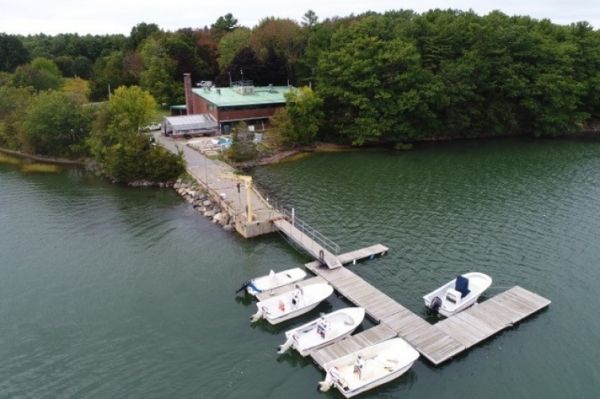For the last 50 years, scientists and students have kept their fingers on the pulse of Great Bay and coastal New Hampshire thanks to a UNH outpost tucked along the shores of the state’s largest estuary. The Jackson Estuarine Laboratory (JEL), located on Great Bay’s Adams Point, celebrates its 50thanniversary this year — that’s five decades of research on microbes, oysters, seaweeds eelgrass, lobsters, horseshoe crabs, water quality and so much more. A lot has changed since 1970, but one thing has remained steadfast: JEL’s commitment to advancing the understanding and preservation of estuarine, coastal and marine ecosystems.
“Jackson Lab’s potential for field-based research is enormous,” says Diane Foster, director of the UNH School of Marine Sciences and Ocean Engineering, of which JEL is a part. “UNH has immense strengths in the coastal sciences, and the Great Bay Estuary serves as a living laboratory where JEL scientists can translate what’s happening in the bay to the changes happening to estuaries around the world. The expertise of JEL scientists advances our knowledge of human impacts, like climate change, and contributes adaptive solutions for our coastal resources,” she adds.
Hailed as one of the first academic labs in the nation designated solely for estuarine sciences, JEL serves as a vital resource for scientists and students to conduct their research, as well as local, state and federal natural resource management agencies that rely on critical ecological data collected by the lab’s scientists. Since 1970, JEL scientists have trained over 100 graduate students spanning two generations and have published upwards of 600 peer-reviewed journal articles on estuarine and marine-related topics.
Continue reading at University of New Hampshire.
Image via University of New Hampshire.


